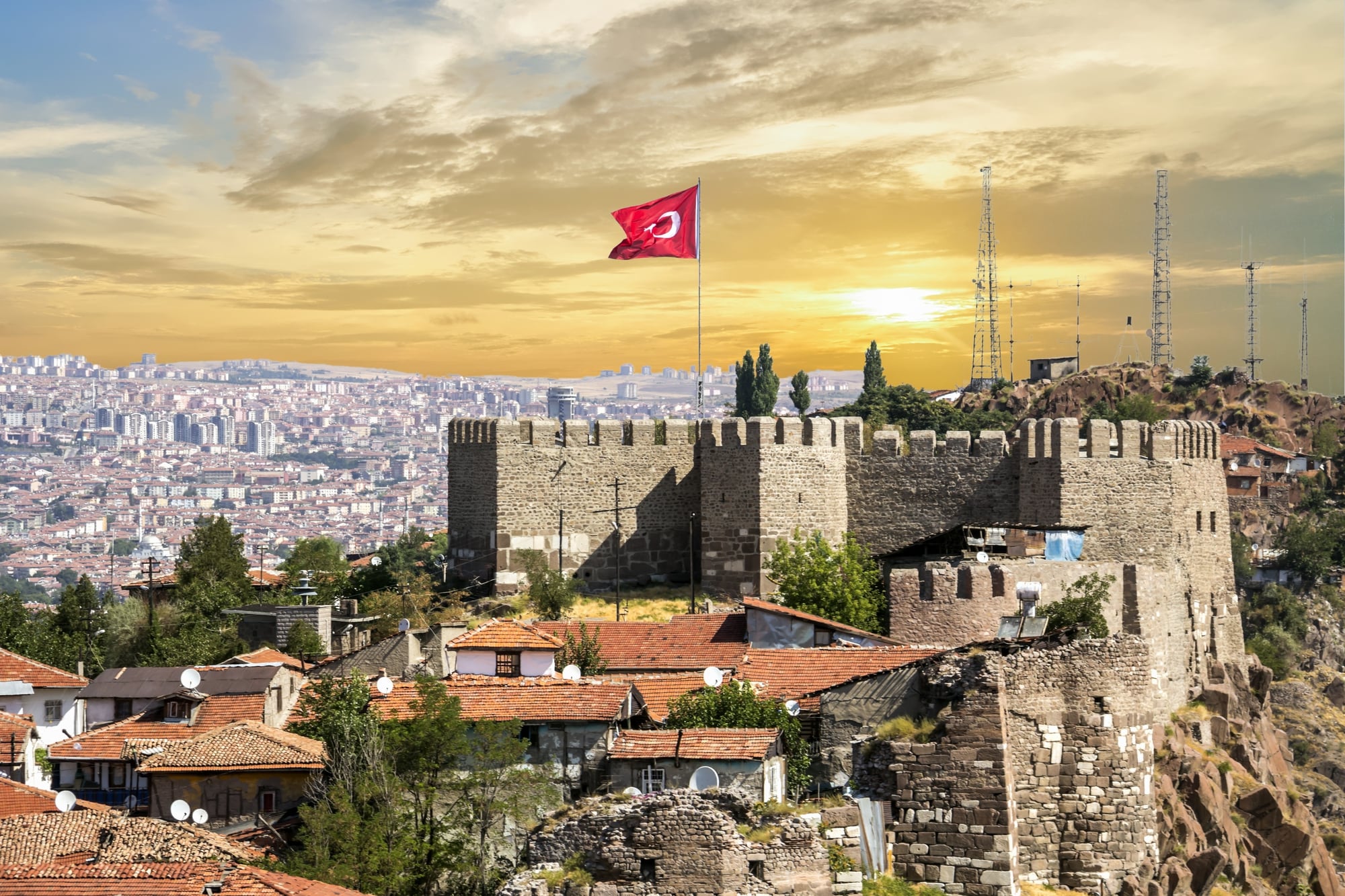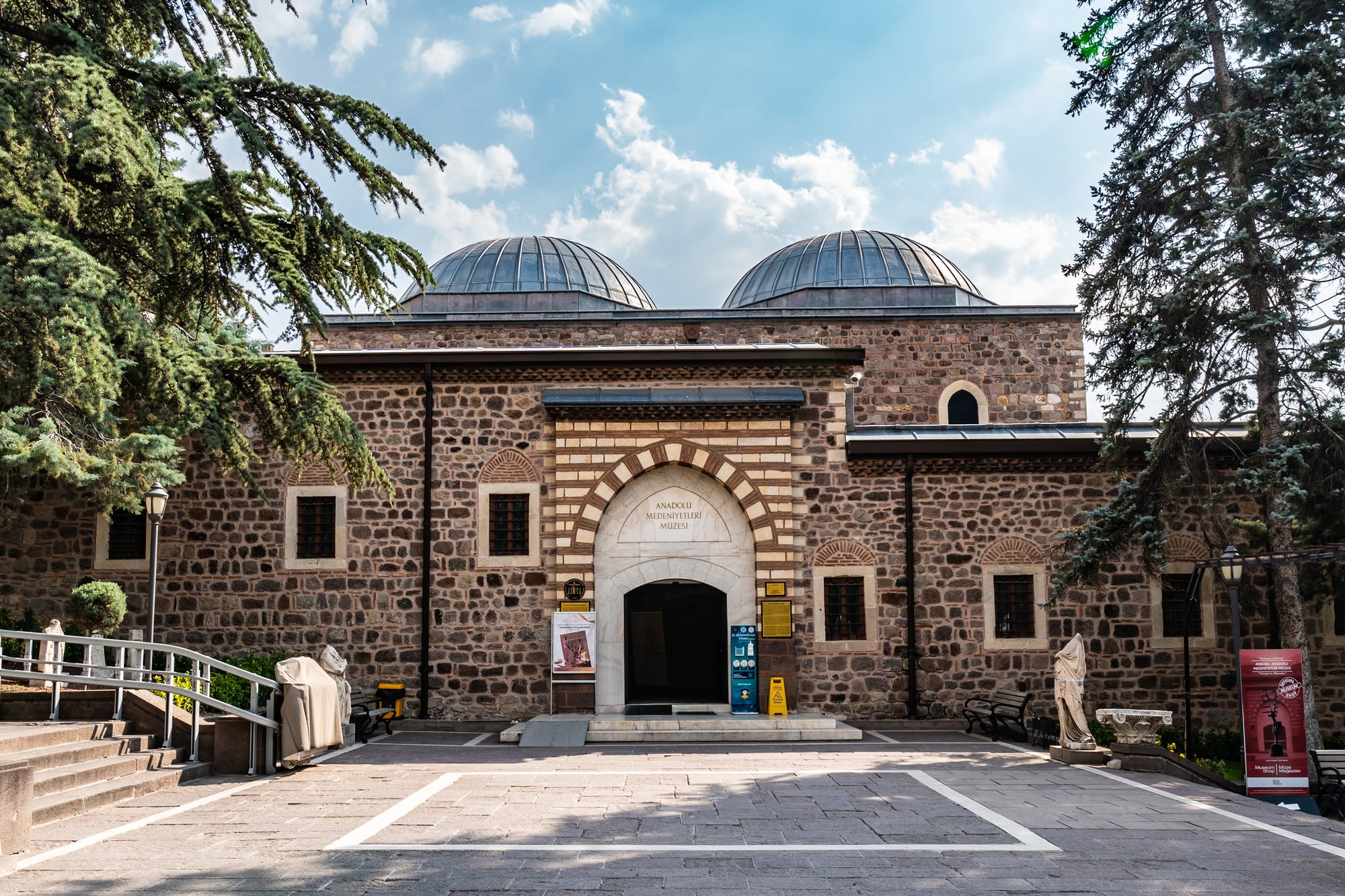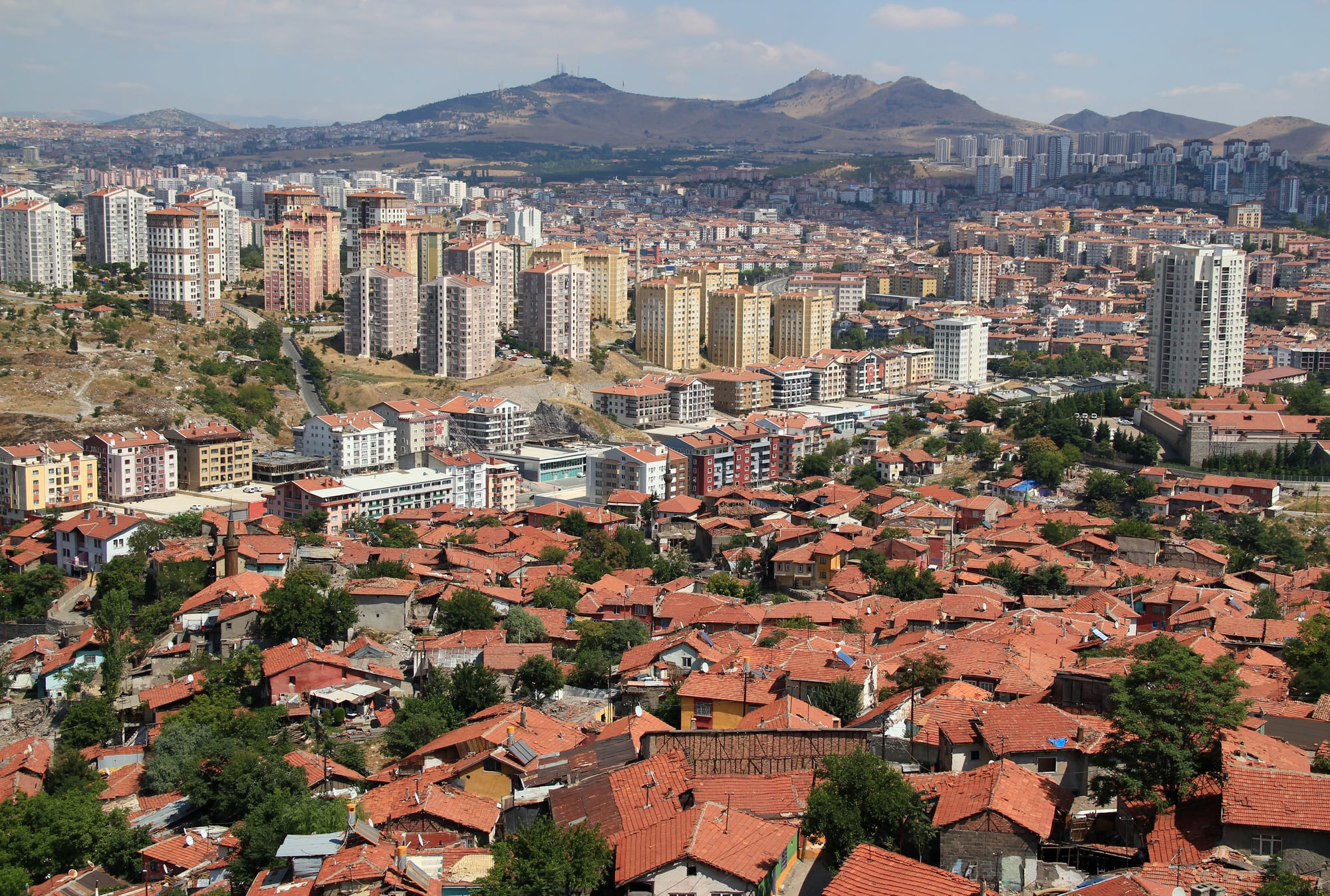Alongside the magnificence of Istanbul, Ankara stands as a sanctuary in the heart of Anatolia. This is exactly why it is the capital city of Turkey. It is what Atatürk once referred to as the center of Anatolia. Ankara Castle lies at this very point, in Altındağ district, where the ancient settlements of the city are located. Ankara’s historical memory, culture, and the axis of the republican period gather around the castle.
A walk around the Castle is a must to explore Ankara. I personally would take everyone who wants to visit Ankara to the Castle first, tire them out on the slopes leading to the peak point, and then let them surrender to the breathtaking view of the city. The second most meaningful landmark to understand and get to know Ankara is the Castle. The first one is always Anıtkabir, Ataturk’s eternal resting place.

Thinking About Ankara Castle’s Story While Sipping Your Coffee
In this article, while explaining the Ankara Castle and its value for Ankara, we will also look into the city’s history. For a long time, I lived in an apartment with a view of Ankara Castle from a distance. Any time I stepped out onto my balcony, I always wondered how long it had been standing there. We don’t know the exact time when the Castle was built. However, according to the references, the Castle existed in the 5th century when the Gauls, a Celtic tribe from Central Europe, made Ankara their home. This means that the history of the Castle dates back to before the 5th century.
When Galatia, the name of Ankara in that era, was besieged by the Romans, the city’s fate was altered. The city grew and expanded. In 217 AD, the castle was repaired by order of the Roman Emperor Caracalla. However, just like every other castle, Ankara Castle witnessed many battles and wars and became the first place to be destroyed for centuries. During the Byzantine period, both the city and the Castle were renovated and the outer gate was built. The inner castle walls were raised at the same time.
Castles: The Greatest and Most Magnificent Witnesses of History in Cities
The transition of the Castle to Turkish reign occurred in 1073 with the Seljuk Dynasty. In 1071, ‘the gates of Anatolia were opened to the Turks, ’ which is also a very well-known saying among Turkish people. The year 1073 marked a turning point for Ankara. The castle, which has seen different civilizations, witnessed history, and defended the states that ruled its land, has survived to the present day. It is still situated in the most central part of Ankara as the greatest witness of history.
Visiting Ankara without going to the Castle means failing to get to know the city. First off, it should be known that going from point A to B in Ankara, you need to go to Kızılay Square. Kızılay is Ankara’s transit hub and the heart of the city. For this reason, when we map out a route to the Castle for you, we start it from Kızılay.
If you are in Kızılay on a chilly day and like walking, you do not need any transportation. The route is a bit long, approximately 45 minutes, but it’s definitely worth it. You should head towards Sıhhiye on the wide sidewalks. We are now moving from Yenişehir to the old streets of Ankara.
Let’s start climbing up from the campus of Ankara University Faculty of Language, History and Geography. To arrive in Altındağ, we are leaving behind Sıhhiye, named after the hospitals within the district and means all health-related affairs in old-Turkish language. Here, we are greeted by white-painted 2-storey mud brick and wood houses. These houses are widely known as ‘Ankara Houses’ and have survived from the 17th, 18th, and 19th centuries to the present day. Nowadays, these traditional houses host museums, association offices, and public education centers. They also serve as cafes, restaurants, and souvenir shops, making them popular points of interest for tourists worldwide.

The District of Altındağ: Home to Ankara’s Old and Historic Streets
Altındag district is home to the most significant and worth-seeing museums in the city. Museum of Anatolian Civilizations, especially known for its Hittite works, Ankara Art and Sculpture Museum, The Ethnography Museum, Museum of the War of Independence (the first building of The Grand National Assembly of Turkey), Ankara Museum of the Republic (the building of the 2nd Grand National Assembly of Turkey), the Ankara Palace, where the first republic balls were held, the Roman Bath, the Column of Julian and the Temple of Augustus are some of the museums and artifacts located within the border of Altındağ.
As we carry on our route to the Castle, you may take your time to visit the museums and artifacts aforementioned, or you can devote your day solely to the Castle. Personally, I would see a few of these museums if I had a guest with me. But if I am alone on this route, I prefer to shop in Altındağ and visit relatively smaller and boutique museums such as ‘Anne Müzesi’ and the Chess Museum. The choice is ultimately yours. Let’s continue climbing up to the Castle.
This part of the road is a bit uphill. However, there are plenty of places to look around and explore with each step you take. For this reason, it is important to begin this route when you have ample time. When you feel tired, you can take a break and enjoy a cup of Turkish coffee prepared on sand by Turkish traditions, find a café to take a sip of Turkish tea, or satisfy your hunger with local pastries like ‘gözleme’. But if you prefer to walk all the way up to the top first, see the city view, and wander in the Castle, you can eat and drink something at the café located right next to the Castle or on your way back.
Returning Home with Memories Reflecting the City and Ankara Castle’s Culture
While climbing to the Castle, we took a cultural journey, visited museums and stopped for coffee and tea along the way. There are also numerous opportunities to buy authentic and domestic souvenir items. Magnets, must-have ornaments for every home, come first. The Castle Road is the best place in town to get magnets featuring the castle view and symbols unique to the Castle and Ankara. Souvenirs with evil eye beads, scarves and shawls, which are indispensable in Turkey, are the most frequently preferred products. Additionally, there are second-hand shops on the castle road, small shops in the inns selling handmade products, handicrafts produced at community education centers supported by municipalities, and stands with homemade products like sauces and pasta– all popular spots for both local and international tourists.
I especially love visiting the stands where jewelry and knitted products are sold. It’s a unique opportunity to support women’s domestic labor and to own handmade, non-factory products. However, I recommend shopping all this on your way back from the castle. You don’t want to climb and walk around the walls of the Castle carrying bags in your hands. The best approach is to check out these places while heading to the castle, get an idea, and then shop on your way back. This will be the most practical and least tiring way.

Looking at Ankara from the Castle
After a long but enjoyable walk, we have finally reached the castle. We were welcomed by an arched gate and stepped inside. Throughout the day, local musicians playing traditional instruments filled the area with music as we walked along the castle walls.
Who knows who walked this path, for what purpose, and at what time… Which civilization took shelter in this Castle to continue its existence, trusted its walls, and got protected… Who knows which children grew up around this castle and defended their city… The castle stands before us, encompassing all this history within its 43,000 square meters of grandeur. As we observe the outer castle surrounding old Ankara city, we see that the inner castle is four stories high. Built with Ankara stone and rubble stones, this Castle is a remarkable sight.
The most prominent historical trace on the gate is an epigraph dating back to the Ilkhanate period. In the northwestern part, there is an article stating that the Seljuk Dynasty built it. Upon careful inspection of the castle, we see that in places damaged during the 8th and 9th centuries, marble blocks and column capitals from Roman monuments have been used as replacements. This is a structure where history intertwines. The use of historical artifacts found around that time in the buildings enriches the castle.
Such a magnificent structure is accompanied by a unique view. We watch the surroundings while walking carefully on the columns. Looking at Ankara from a distance, seeing the city through the eyes of the castle, is an indescribable feeling.
The castle encourages people to get to know Ankara more. There are many more routes to follow, leading you closer to the places you saw from a distance, allowing you to explore more and internalize Ankara. As we reluctantly say goodbye to the castle and descend the slope at a faster pace, I think about the next places to discover. Should we delve into Roman history or follow the traces of the Republican era? Before deciding, we need to take a moment to absorb what we’ve seen. In the chillness of an Ankara afternoon, with a gentle breeze on our faces, we head back to Kızılay where we started.
